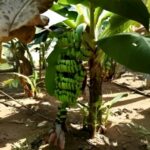The test reports should also be submitted to the Tea Board’s zonal office. More chemicals and new parameters have been included under the FSSAI Act.
Kolkata: The Tea Board of India has issued a circular, directing all tea manufacturing units in the country “to strictly comply with the FSSAI (Food Safety and Standards Authority of India) norms and get their end product tested in any NABL-accredited lab” to ensure that the quality of brew sold in India and exported abroad is never compromised.
The Tea Board circular adds: “The test reports should also be submitted to the Board’s zonal office for our information…however, all manufacturing units (both estate factories and bought-leaf factories) are hereby informed that Tea Board Quality Control Laboratory has received NABL accreditation…”
A top Tea Board official reasoned that the circular is needed owing to the continuous revision of the FSSAI Act, 2006 and its amendments in 2018. “As more chemicals and new parameters have been included under the FSSAI Act, our duty was to inform and educate the existing as well as new players in the tea production business,” added the Board official. The FSSAI test for the tea sector includes pesticide residue and heavy metal analysis.
Though small tea growers, who are always criticized for low quality control of their produce, do not come under the purview of FSSAI as primary producers.
The small tea growers’ (STG) body, Cista, welcomed the latest Tea Board circular for compulsory testing of tea for twice a year. Bijoy Gopal Chakraborty, president, Cista, said: “STGs should also strictly follow FSSAI and Plant Protection Code (PPC). We have to ensure our customers that we are producing clean, pure and environment-friendly tea. We have already requested Tea Board to reach out to everybody for training-cum-awareness campaign at the grassroot level.”
The Indian Tea Association (ITA), the premier tea producers’ body, claimed that all its member-producers have always complied with with FSSAI testing norms. “However, the Tea Board’s initiative is commendable as it would make the buyers more confident about Indian tea.”
The Tea Board is also organizing a ‘Young Entrepreneurs’ Meet’ for drawing a future roadmap for the morning beverage on April 24. The meet will discuss the steps “needed to be taken to bring quality produce to the market and discouraging the rampant production, sales, export and marketing of low quality tea.
UPASI calls for revival of Tea Council
Meanwhile, the United Planters Association of Southern India (UPASI) has urged Tea Board India to revive Tea Council, both, in north and south India, to monitor tea exports and imports.
M.P. Cherian, president of UPASI, said in a release that according to 2021 data, though south India’s share in total tea production in the country was 17.50 %, it’s share in the total exports was 42.02 %. There was no conclusive evidence regarding recent reports of rejection of tea consignments by some importing destinations.
The largest auction centre in Kochi was periodically testing all producers’ auction teas. These teas had MRL (Manufacturing Readiness Levels) far below the Food Safety and Standards Authority of India (FSSAI) specified residue levels. Every consignment of tea was analysed not only for the pesticide residues, but also for heavy metals and microbial load. Tea consignments were shipped only after the buyer had tested the sample of each consignment and approved it. The Tea Board should immediately revive the Tea Council to monitor all exports.
The UPASI said its tea members adhered to high standards in production by ensuring that the teas were within the residue levels laid down by the various standards/statutes. UPASI members were regularly advised to follow the protocols prescribed while applying pesticides.
Further, the long plucking intervals followed in south India facilitated safe harvest intervals specified for each pesticide. The UPASI Tea Research Foundation (UPASI-TRF) recommended pesticides approved by Central Insecticides Board (CIB) and the industry followed these stringent guidelines on the MRL limits.
Based on the standards adopted, it had developed Plant Protection Code (PPC), which was in place for the compliance by the Industry. Though several pesticides had been registered for pest control in agriculture, the choice for widespread application in tea was limited to a few chemicals for which the Maximum Residue Limits (MRL) had been declared by several countries and international organisations.
Further, pesticide usage in south India was need based. The member tea gardens of UPASI used pesticides that were cleared by the UPASI TRF for use in tea. UPASI-TRF was also recommending non chemical pest management strategies such as use of cultural, botanicals, pheromones and microbials, it said.

















